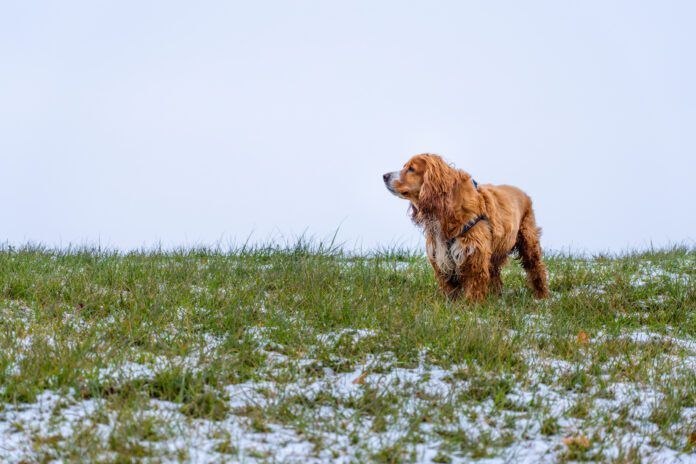Yes, dogs can get fleas in the winter. With the right conditions, dogs can still pick up fleas outside even in the winter. Freezing temperatures will slow down their life cycle, but there is still risk.
And your house is perfect for fleas all year round. Even if the outdoor weather is sufficient to eliminate fleas, every life stage will be nice and cozy in our warm homes that are complete with nooks and crannies to hide and hosts to feed on.
This is why indoor-only pets can get fleas, too. The initial flea might have hitched a ride on another pet or your clothing, or could have traveled from a neighboring apartment. And mice can bring fleas into our homes to infest our pets. And, yes, ticks are active in the winter, too.
The Flea Life Cycle
A flea’s life starts as an egg. Female adult fleas lay their eggs on their hosts and in the surrounding environment, so flea eggs can be both on your dog and in his bed, the carpet, your sofa… you get the picture. Eggs can hatch as soon as one day after being laid if the conditions are right. Other times they might incubate for 10 days before hatching.
When the egg hatches the flea enters the larval stage. Flea larvae live wherever their parents were hanging out, eating their feces (flea dirt) as well as blood. This stage lasts five to 20 days depending on the conditions.
Next the larvae spin protective cocoons and become pupae. Pupae are safe inside their cocoons and can stay like that for months. This is the primary stage that gets dog owners in trouble during the winter! You may think that all the fleas in your yard are dead because of the cold, but the pupae are still there, waiting for a warm day.
The adult flea waits to emerge from the cocoon until both the conditions are favorable, and a host (your dog) is nearby. All it takes is your dog lying in a pile of leaves on a surprise warm day in the middle of January to restart a flea infestation.
From there the adult fleas bite your dog to drink blood, mate, and lay eggs to continue the cycle.
Breaking the Cycle
If you find fleas on one of your pets, you will need to treat all pets in the household and your home itself for three consecutive months to break the cycle. Severe infestations may require longer if you miss some pupae when vacuuming and they hatch after you have stopped treating your dogs.
I usually treat my dogs and cat for fleas year-round. Even residents in the northern United States are seeing more popup days in the winter with temperatures above freezing. My dogs travel with me and attend dog shows, where they could potentially be exposed, and while my cat is primarily indoors, she does hang out on our screened porch. I would much rather prevent a flea infestation than have to try to eradicate one.






